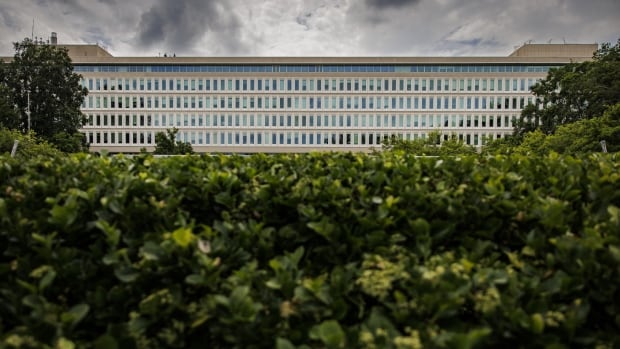Will Canada escape the potentially economy-smashing tariffs threatened by Donald Trump? If you can’t answer that question, congratulations, you’re in good company.
It’s the multibillion-dollar enigma on the minds of some of the best-connected people in North America’s capitals.
Trump has threatened a 25 per cent tariff on every product entering from Canada and Mexico — unless those countries make as-yet-undefined changes at their borders to slow the flow of migrants and fentanyl.
There’s a widespread belief that Trump wants to extract concessions that will get his presidency off to a strong start.
What’s unclear: What numbers, or targets, or actions, would satisfy him and avoid a likely recession and trade war.
Even people who know Trump, and trade, and Canada, confess to their own befuddlement, from people who worked in Trump’s first White House to others advising the Canadian government.
“The challenge is that Canada doesn’t have a clear sense of what does Team Trump really want? What on the border do you want fixed?” Canada-U.S. trade consultant Eric Miller told CBC News. “What does the definition of success look like?”
After U.S. president-elect Donald Trump threatened to slap a 25 per cent tariff on all goods from Canada and Mexico, Prime Minister Justin Trudeau said he had a call with Trump where he laid out the ‘facts’ about the Canada-U.S. relationship. Trudeau also said he reached out to Ontario Premier Doug Ford and that there will be a meeting of first ministers this week.
The U.S. president-elect offered no specifics in his phone call Monday night with Prime Minister Justin Trudeau. Sources say the call began with a few minutes of friendly banter.
When they subsequently broached the potential irritant, Trump repeated the threat he’d posted on social media; Trudeau listed things Canada has already done at the border and suggested Canada’s situation wasn’t as dire as Mexico’s.
Here’s what is already abundantly clear: The old maxim that national security equals economic security has never been more true. The U.S. is threatening to squeeze wallets to bolster its own national security.
In order to remain inside the American trade tent, this means seriously addressing U.S. concerns about things like the border, defence spending and the security of supply chains, say a number of insiders.
Trump demonstrated this pattern in his first term by threatening Mexico with tariffs unless it controlled migration. A first-term Trump official even recently suggested Canada deserves economic punishment if it won’t increase defence spending.
Now, border security again is at the heart of a Trump threat about trade. A senior trade official in the first Trump White House said this represents a sea change.
“It used to be that trade was discussed in backrooms in Geneva. That’s no longer in the case. Trade used to rest in its own lanes, but the lanes have become increasingly blurred over the past year eight to 10 years,” said Everett Eissenstat, who was deputy director of Trump’s White House National Economic Council in his first term, and a trade specialist.
“Part of that is President Trump; part of it is the nature of the global economy.”
Trump truly believes in tariffs, and believes in using them to achieve objectives others might see as unrelated, Eissenstat said.
No ‘urgency’ in Ottawa
The Biden administration, for its part, used the carrot, not stick, approach to make progress on some issues.
It pressed behind the scenes for Canada to tighten travel rules for Mexico, lobbied successfully for more defence spending, and actually gave Canada money after Ottawa reversed its approach to critical minerals; Canada relented on a plan to let Chinese state-owned companies to buy minerals used in electronics and weapons.
The U.S. is now spending its own tax dollars, through a special military fund, to help jumpstart several Canadian mineral projects.
“We shouldn’t have had to wait for U.S. [defence spending] to go ahead with those projects,” said Heather Exner-Pirot, an adviser on energy and security to the Business Council of Canada.
“There’s no sense of urgency [in Ottawa].”
The business lobby group argues in a new report for ramping up Canada’s military capacity and minerals production with greater urgency.
Trump’s re-election might be stoking that urgency. But there’s a longer-term trend Canada is waking up to, says Miller, a Canadian in Washington who advises governments and businesses in both countries.

It’s the growing anxiety of the superpower next door. It’s an anxiety driven, in part, by a sense of losing ground to a powerful new adversary, China, on economics and military might.
But as demonstrated by comments from Trump and his allies, U.S. security concerns start closer to home, at land borders, where millions of people have crossed illegally, including hundreds on terrorist watchlists stopped while crossing.
“Canada has to readjust its thinking to a world where the U.S. feels vulnerable. And where it doesn’t always treat its allies with the collaborative spirit you wish they did,” said Miller.
So what’s Trump ultimately going to do?
Canada has plenty riding on the result. Various estimates say, if implemented fully, Trump’s tariffs could strip several points off Canada’s economy.
They could see Canada’s GDP contract 2.4 per cent, push companies to move production to the U.S., drive down the dollar, stoke inflation and require urgent cuts in interest rates, which will further worsen the dollar and inflation, according to Andreas Schotter, a professor at Ivey Business School at Western University in London, Ont.
Eissenstat, the former Trump White House official, says this could go either way.
“It would be prudent to assume the worst and prepare for the worst, but be ready to try to make a better outcome achievable,” he said.
“These threats are real. They’re a manifestation of broader trade trends and they need to be taken seriously.”
If anyone can negotiate an exemption, it’s Canada, says Miller.
There’s a deal to be made if Trump actually wants one, he says, because the problems with Canada’s border are comparably minor, and hardly justify the cross-border economic damage of tariffs on Canada’s oil, cars and food.
“But we cannot assume we’re going to get to a decent place,” Miller said. “There are some people who say, ‘He’s negotiating. It’s all posturing.’ But I for one don’t take that view. I think he’s somebody who is perfectly willing to carry through on this.”
And if Trump does carry through? There will be lawsuits by U.S. companies, a trade challenge by Canada and Mexico under the CUSMA and talk of retaliatory tariffs, risking additional economic harm.
It’s possible Trump could announce the tariffs on Day 1, Jan. 20, Miller says, then it might take a while to apply them at the border, and in the meantime there would be ongoing negotiations.
The broader story, however, would be the end of an era that dates back to North American trade pacts and arguably even earlier, to the 1965 Canada-U.S. free-trade deal in cars.
“We’re talking about remaking how we’ve run our economies and done trade for the last 30 years,” he said. “[If this happens] effectively USMCA, or CUSMA, is done.”






